
It’s complicated. In modern times, Mexico and the United States have had almost a love-hate relationship. “On the one hand, the two countries are close. But on the other hand, they’re also distant because there are big, big differences,” said Richard Miles. He’s a former diplomat at the Center for Strategic & International Studies in Washington, D.C. Here’s a look back and ahead.
Looking Back
Even before the U.S. Border Patrol officially began in 1924, immigration officials patrolled the southern U.S. border. In 1904, officials worried about Chinese people coming into the United States that way. Meanwhile, up to 16,000 Mexicans were working on U.S. railroads during the first decade of the 20th century. Hundreds of thousands more people moved north after a revolution broke out in Mexico in 1910.
Tensions grew between the two countries as political upheaval continued in Mexico. U.S. president Woodrow Wilson sent U.S. Marines to Veracruz in 1914. Mexico had wrongfully detained several U.S. soldiers. Wilson again sent troops in 1916 after Francisco “Pancho” Villa attacked Columbus, New Mexico. Things settled down a bit once Mexico adopted a new Constitution in 1917.
Mexicans were largely exempt from U.S. immigration quotas in the 1920s. Then the Great Depression began in 1929 and attitudes shifted. President Herbert Hoover announced a program of “American jobs for real Americans.” The government deported up to 1.8 million people. Most of the deportees may have come from Mexico, but a number of the deportees were American citizens.
Denne historien er fra January 2020-utgaven av Cobblestone American History Magazine for Kids.
Start din 7-dagers gratis prøveperiode på Magzter GOLD for å få tilgang til tusenvis av utvalgte premiumhistorier og 9000+ magasiner og aviser.
Allerede abonnent ? Logg på
Denne historien er fra January 2020-utgaven av Cobblestone American History Magazine for Kids.
Start din 7-dagers gratis prøveperiode på Magzter GOLD for å få tilgang til tusenvis av utvalgte premiumhistorier og 9000+ magasiner og aviser.
Allerede abonnent? Logg på
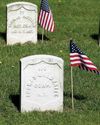
Putting the Pieces Together
Americans needed to begin to put the past behind them, come together, and plan for the future in the spring of 1865. But Abraham Lincoln, the man best equipped to lead them and who had hoped to restore the country as smoothly and peacefully as possible, had been assassinated.
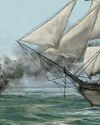
LAST SHOTS
The last Confederate forces in the Civil War didn’t surrender in the spring of 1865 or on a battlefield.
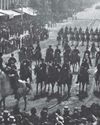
AND IN OTHER 1865 NEWS
A group of African Americans stop at the White House’s annual public reception on January 1, where they shake hands with President Abraham Lincoln.
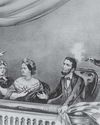
A Plot to Kill President the
For several months, actor John Wilkes Booth’s band of conspirators had plotted to capture President Abraham Lincoln and hold him hostage in exchange for Confederate prisoners.
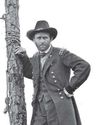
Let the Thing Be Pressed
In June 1864, Union Lieutenant General Ulysses S. Grant began a nearly 10-month campaign in Virginia.
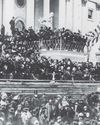
HEALING THE NATION
President Abraham Lincoln took the oath of office for the second time on March 4, 1865.

A Helping Hand
The spring season is hard in any agricultural society. Plants and animals are too small to eat.
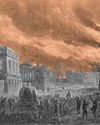
WAR SHERMAN-STYLE
As far as Union Major General William T. Sherman was concerned, the Civil War had gone on long enough.
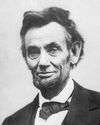
PEACE TALKS
The fall of Fort Fisher made clear that the Confederacy’s days were numbered. Southerners were tired and hungry.
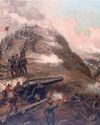
FORT FISHER'S FALL
Outnumbered Confederate soldiers inside Fort Fisher were unable to withstand the approach of Union troops by land and the constant Union naval bombardment from the sea.